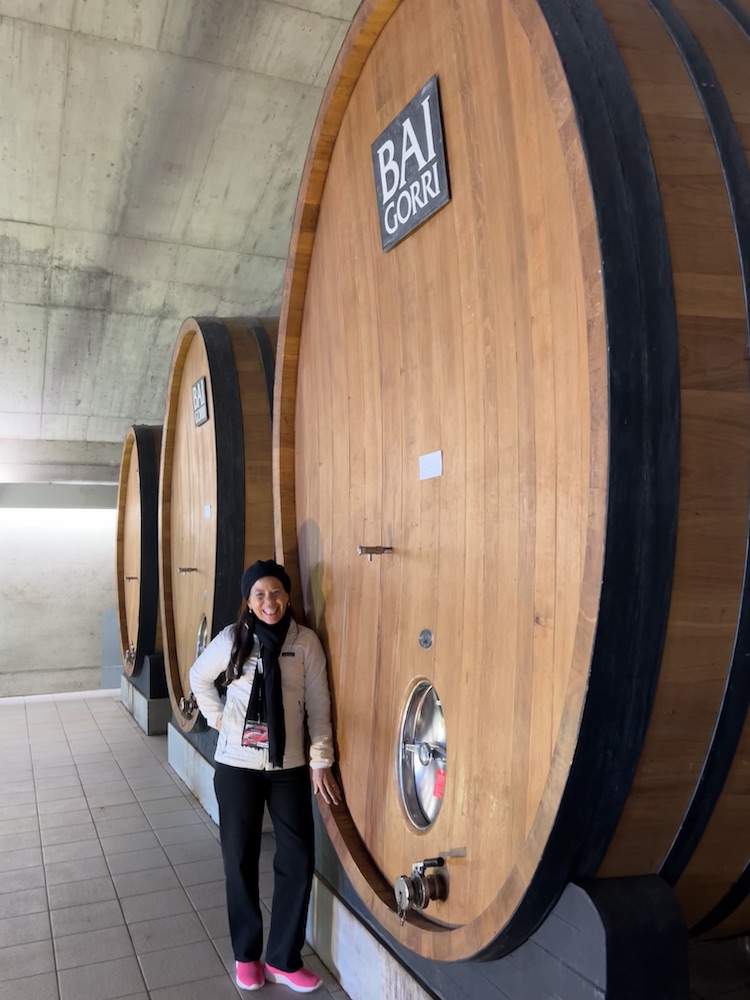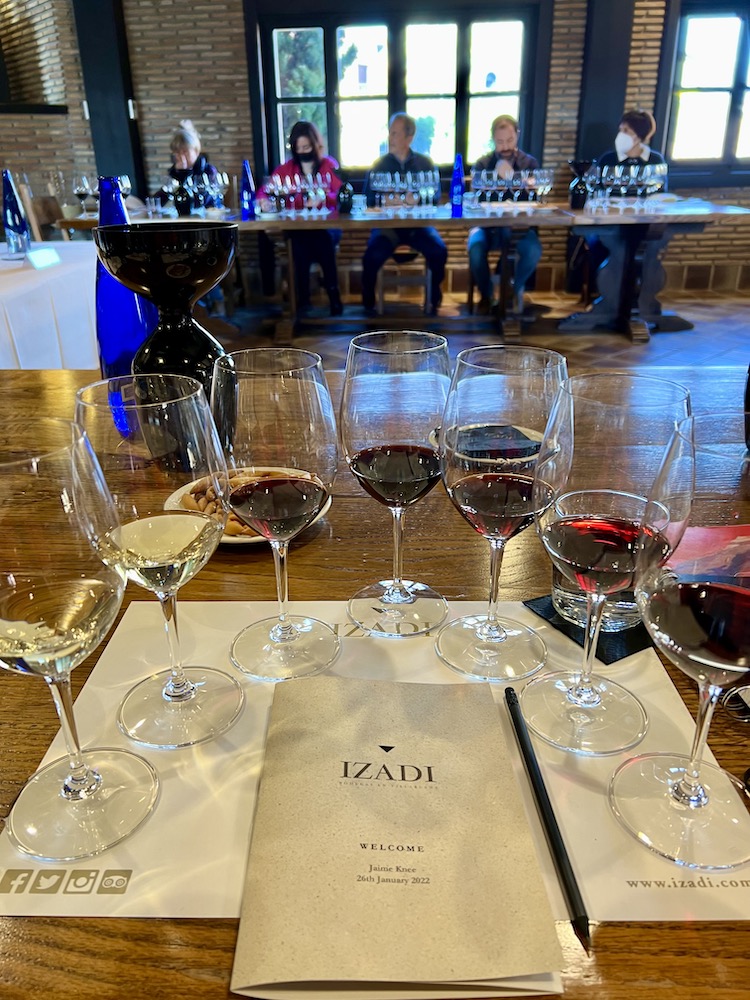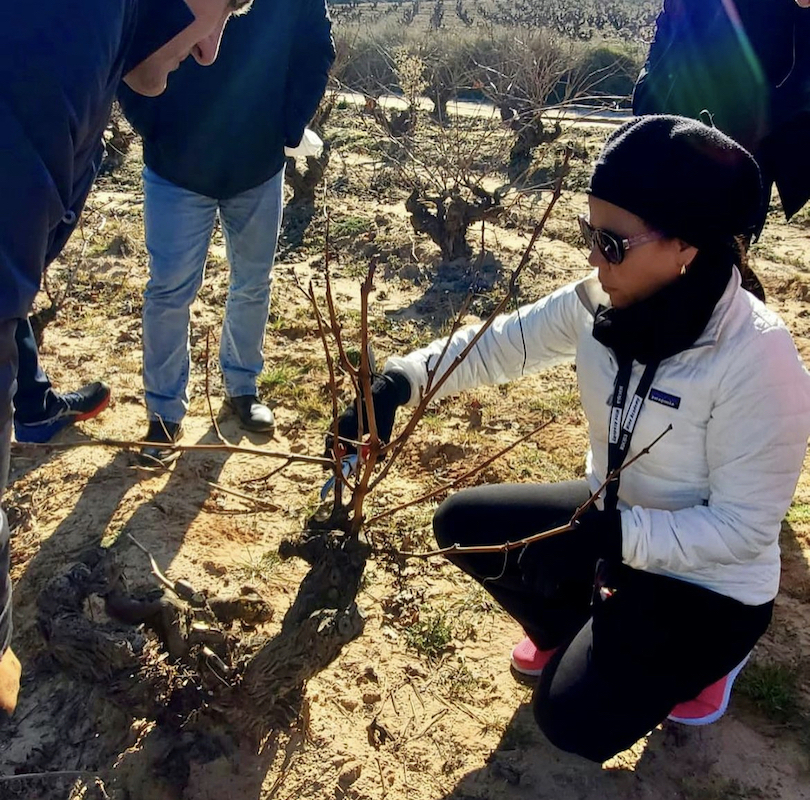Uncorking Rioja: A Wine Journey Like No Other

As I set foot into the legendary Rioja wine region, I knew I was about to embark on a journey like no other. After enduring countless delays, my long-awaited adventure – to Rioja, Spain, for the prestigious Rioja Wine Educator Certification Course – felt like a triumphant victory. Nestled in the heart of Spain, Rioja beckoned with its rich tapestry of vine-clad landscapes and centuries-old winemaking traditions. It was more than just a certification course; it was an opportunity to uncover the hidden gems of Rioja’s terroir and immerse myself in its vibrant wine culture. This journey promised to be a sensory feast for the soul, an exploration that would captivate the senses and leave an indelible mark on my wine-loving heart.
Rioja extends across the autonomous regions of La Rioja and Navarre, alongside the Basque province of Álava. This geographical diversity contributes to Rioja’s renowned terroir, characterized by a mosaic of soils, elevations, and microclimates. The region’s climate varies from Atlantic influences in the north to a more Mediterranean influence in the south, fostering ideal conditions for vine cultivation. These diverse environmental factors play a pivotal role in shaping the flavor profile and quality of Rioja wines, making it a cornerstone of Spain’s winemaking heritage.
The Ebro River, meandering through the heart of Rioja, serves as more than just a picturesque backdrop. Its presence is integral to the region’s viticulture, providing fertile soils and a temperate climate ideal for grape cultivation. As the lifeblood of Rioja, the Ebro River nurtures the vineyards that blanket its banks, shaping the terroir and flavor profile of the wines that emerge from this storied land. Just over the Ebro River from the Basque Country lies Haro, the wine capital of Rioja, renowned for producing Spain’s most beloved wines. The Station District (Barrio de la Estación) nestled in Haro boasts the highest concentration of centuries-old wineries in the world, all centered around a pivotal point, the railway station. It’s no wonder it’s dubbed the golden mile of Rioja wine.

Rioja wines hold a special place in many wine lovers’ hearts, often likened to Bordeaux in France. Like its French counterpart, Rioja produces both red and white wines, with its reds gaining international acclaim. Rioja’s winemaking journey intertwines with Bordeaux’s narrative, particularly during the late 19th century when phylloxera – a tiny yellow louse brought to the continent unknowingly by Victorian-era botanists through American native vines – ravaged European vineyards. Drawn by the promise of fertile soils and a hospitable climate reminiscent of their homeland, French winemakers sought refuge and opportunity in Rioja, bringing with them centuries-old winemaking techniques.
During my visit, I delved deep into Rioja’s terroir, exploring vineyards nestled in open plains, terraces, and hillsides. The region’s diverse soils contribute to the unique character of Rioja wines, infusing them with minerality, structure, and finesse.
The wines of Rioja are made primarily from tempranillo and grenache, known as garnacha in Spain. Rioja reds offer a symphony of flavors, ranging from the soft, warm taste of tempranillo with notes of baked strawberries to the luscious, spicy allure of garnacha, reminiscent of mulberries and black pudding. As I explored the charming streets of Logroño, the capital of La Rioja, I stumbled upon a culinary treasure called pinchos that perfectly complemented Rioja’s exquisite wines. These delightful small snacks, often served on skewers or toothpicks, showcased the region’s rich culinary heritage. From succulent meats and cheeses to fresh seafood and vibrant vegetables, pinchos offered a tantalizing array of flavors and textures that danced on the palate. Pairing these delectable bites with Rioja’s signature tempranillo and garnacha wines was a match made in gastronomic heaven. The robust and fruity notes of tempranillo beautifully complemented the savory richness of the pinchos, while the bright acidity and berry flavors of garnacha provided a refreshing contrast. It was a culinary experience that heightened the senses and elevated the enjoyment of both food and wine.
However, Rioja’s allure extends beyond its wine and food; it’s a region of breathtaking landscapes, vibrant culture, and unparalleled hospitality. Its terroir, shaped by diverse soils and microclimates, adds layers of complexity to its wines. From the limestone-rich soils of Rioja Alavesa to the ferrous-clay soils of Rioja Alta and the alluvial plains of Rioja Oriental, each region offers a distinct expression of Rioja’s winemaking prowess.

My journey unveiled a blend of old-world wineries entrenched in tradition and modern marvels boasting cutting-edge technology. From the historic charm of Bodegas Baigorri to the ultra-modern splendor of Bodegas Beronia, each offered a window into Rioja’s rich winemaking legacy. A standout moment was encountering Europe’s inaugural LEED-certified winery, Bodegas Beronia. Situated in Rioja Alta, this sustainable gem seamlessly integrates with the hillside, preserving the landscape’s natural beauty and reducing its environmental impact.
For those seeking to explore the enchanting Rioja wine region, the best time to visit largely depends on personal preferences and desired experiences. While Rioja offers its charms year-round, many travelers find the mild temperatures and vibrant colors of spring and fall particularly enticing. Spring brings the awakening of vineyards with budding grapevines and blossoming flowers, while fall offers the spectacle of harvest season, with vineyards bustling with activity and the air filled with the aroma of ripening grapes. However, my own experience visiting in January revealed a serene beauty, with crisp morning air invigorating vineyard strolls and fewer crowds allowing for more intimate tastings and experiences.
As I bade farewell to Rioja and reflected on my journey, I couldn’t help but draw parallels between this storied Spanish wine region and our picturesque landscapes of Santa Barbara County. Both regions boast a rich tapestry of terroir and a deep-rooted winemaking tradition that captivates enthusiasts worldwide. What struck me most was the shared appreciation for grenache, which thrives in both climates, contributing to wines of exceptional quality. Just as Rioja’s garnacha lends its spicy allure and vibrant berry flavors to the region’s renowned red blends, Santa Barbara’s grenache vines, caressed by the Pacific breeze, produce wines of remarkable finesse and elegance. It’s a testament to the universal language of wine, transcending borders to unite wine lovers in appreciation of nature’s bounty and the artistry of winemaking.







You must be logged in to post a comment.